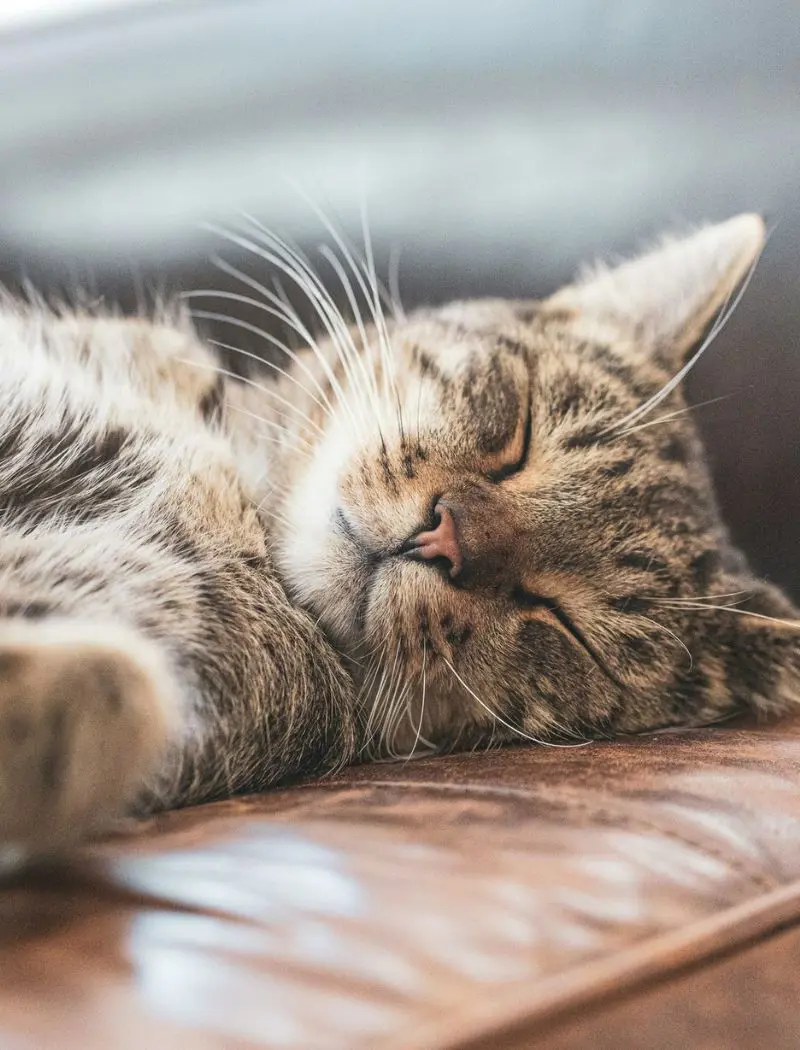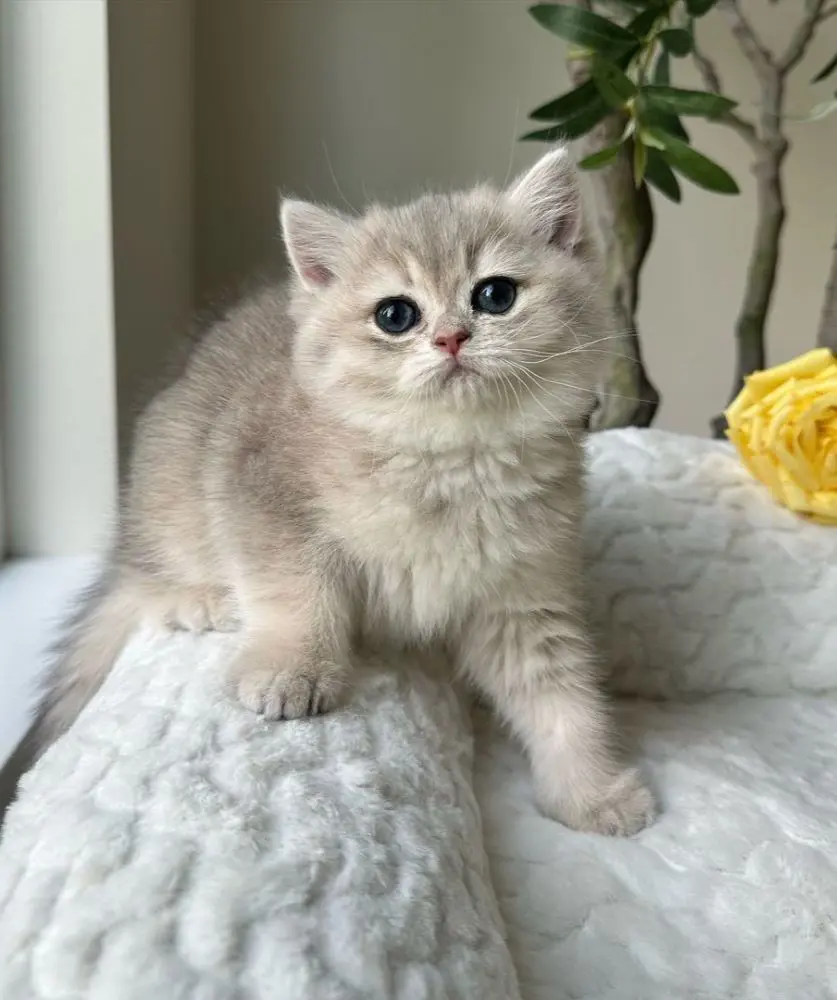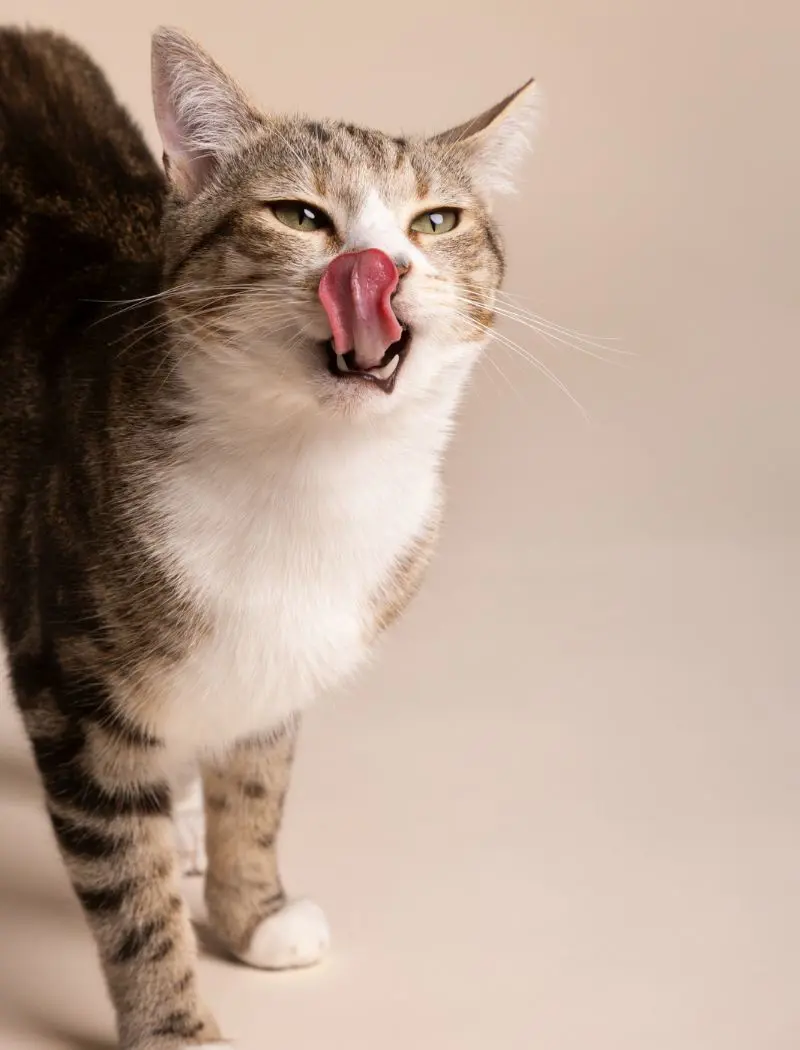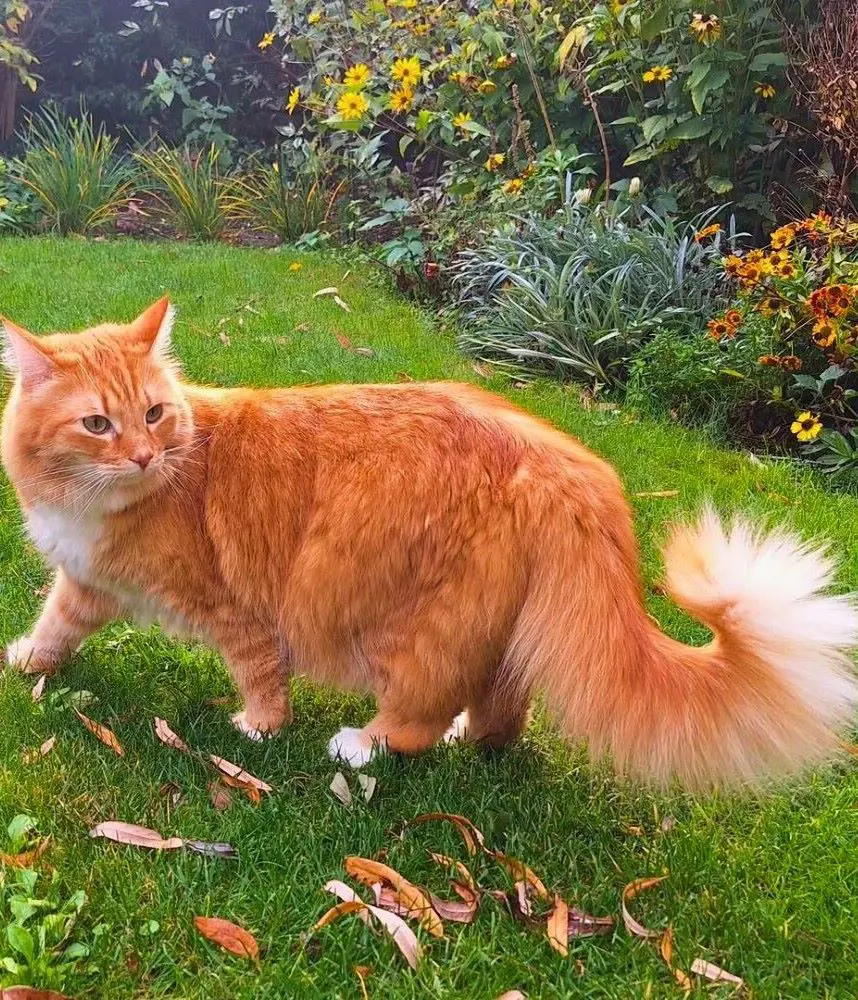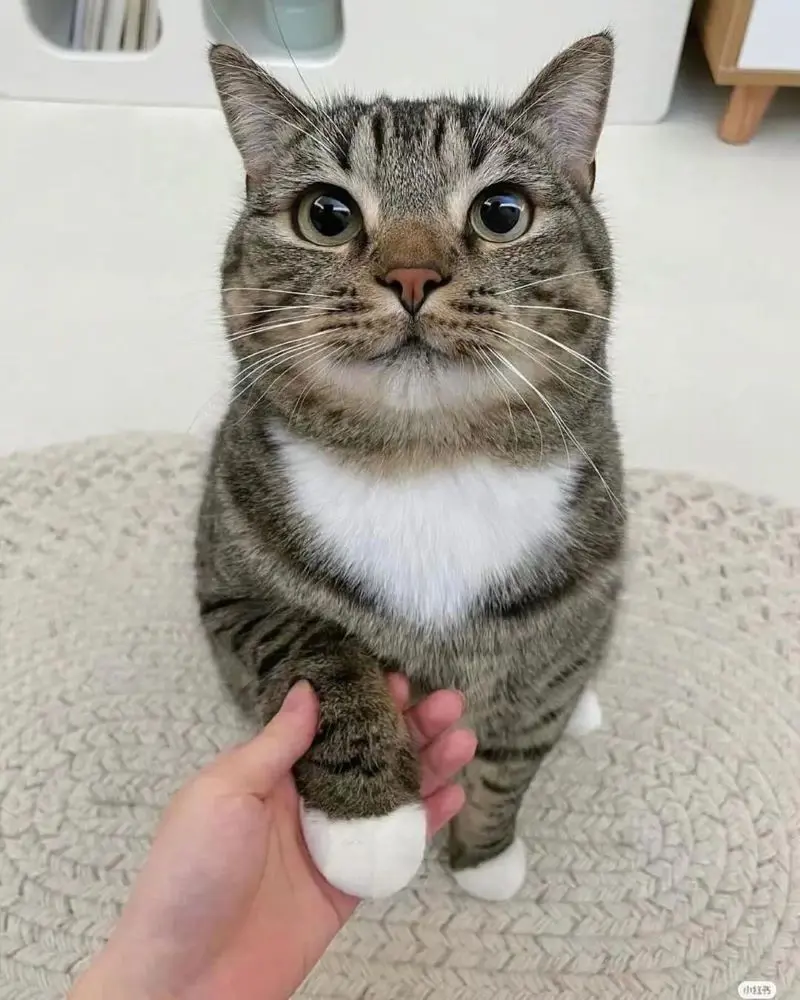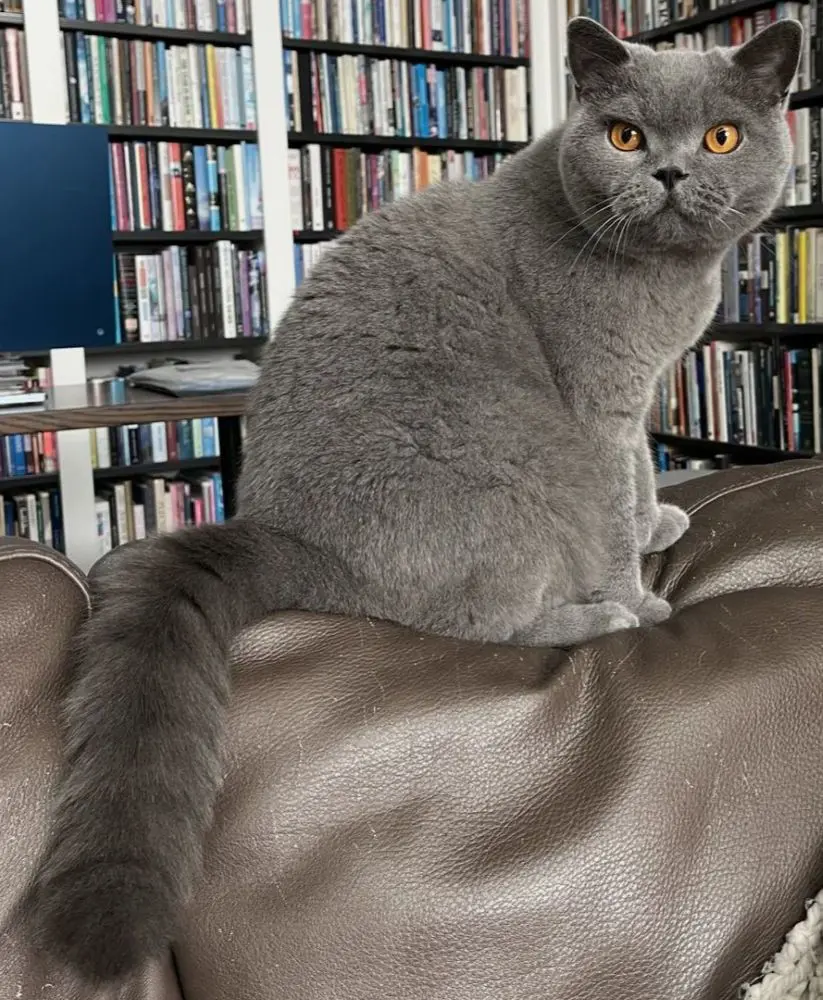Cat Grass: Types, And How To Where To Grow
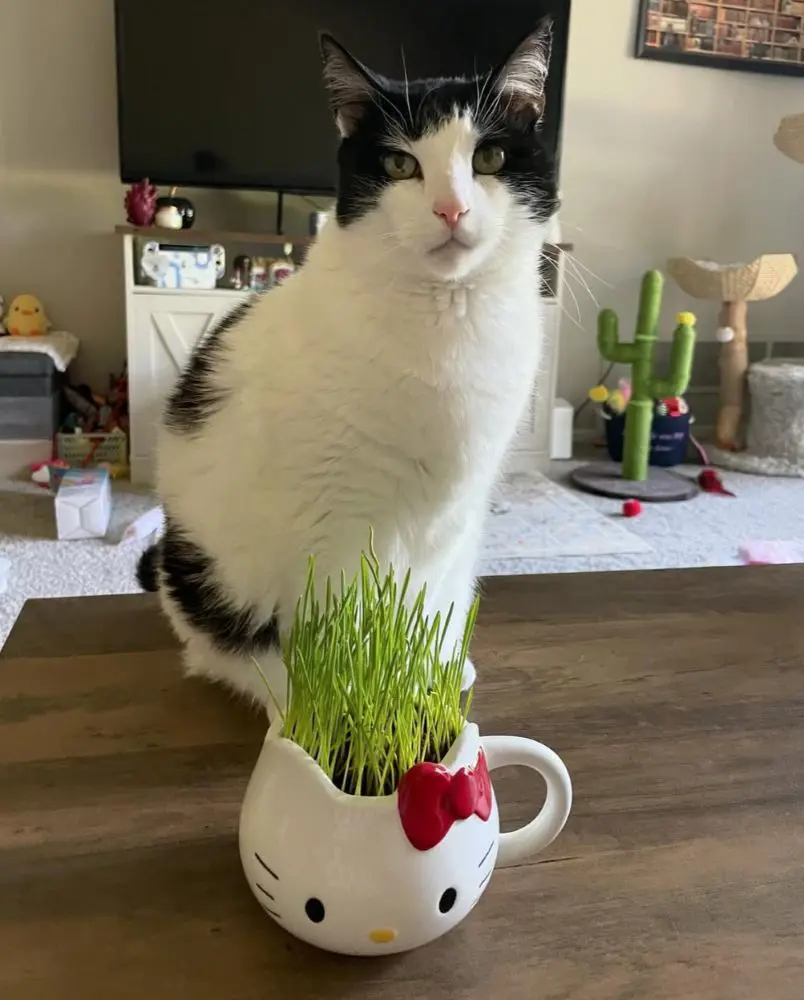
Cats, as obligate carnivores, survive primarily on a diet of meat. However, it's not uncommon for these small felines to occasionally nibble on grasses and plant matter.
While some experts argue that cats indulge in this behavior as grass to induce vomiting after a meal, removing indigestible substances from their foods, others believe cats can extract vital nutrients from edible grasses.
Pet owners often confuse catnip and cat grass as the same, but these two are entirely different. Here we discuss some safe grasses that your pet will love munching on along with tips on how to grow these plants.
1. Wheat Grass
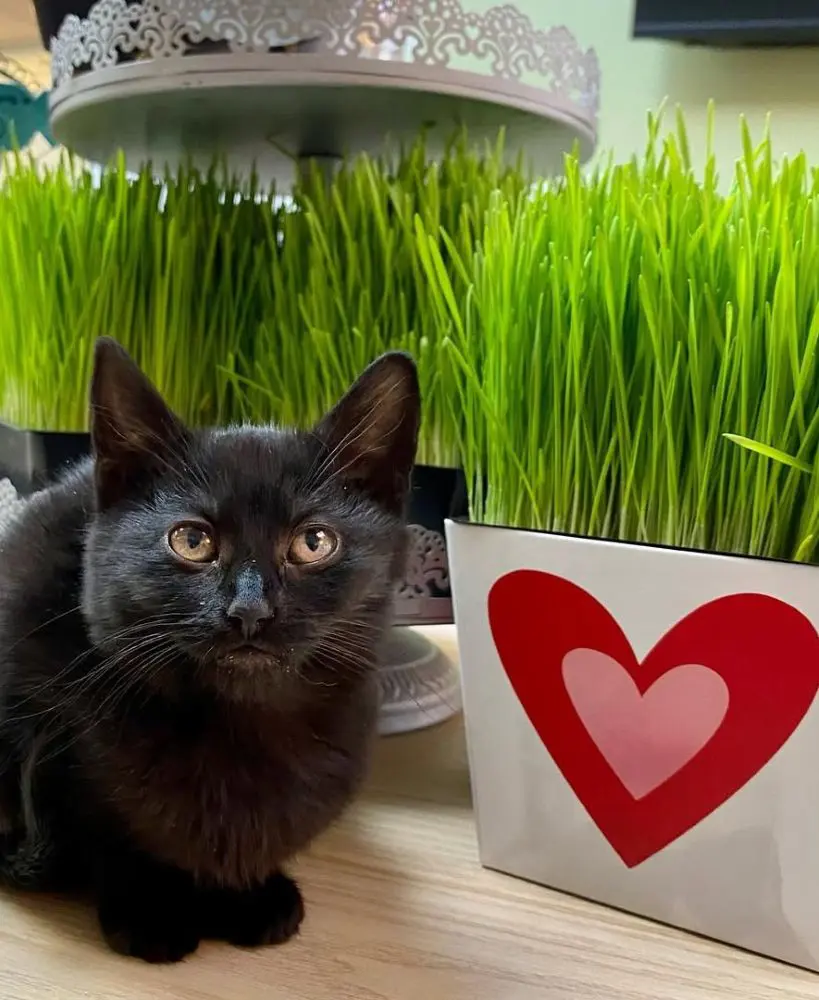
Unless your pet is distinctly allergic to wheat, wheatgrass is great for serving as an occasional treat. This vitamin-rich grass develops in the initial stages of a wheat plant's growth before the grains sprout.
Besides providing vital nutrients, wheatgrass is also extremely low in calories and successfully aids in weight loss. However, at the same time, the portion should be moderated cautiously, as cats are not designed to survive on grass. Also, the plant should be grown pesticide free for your pet to enjoy it without risking its health.
2. Barley Grass
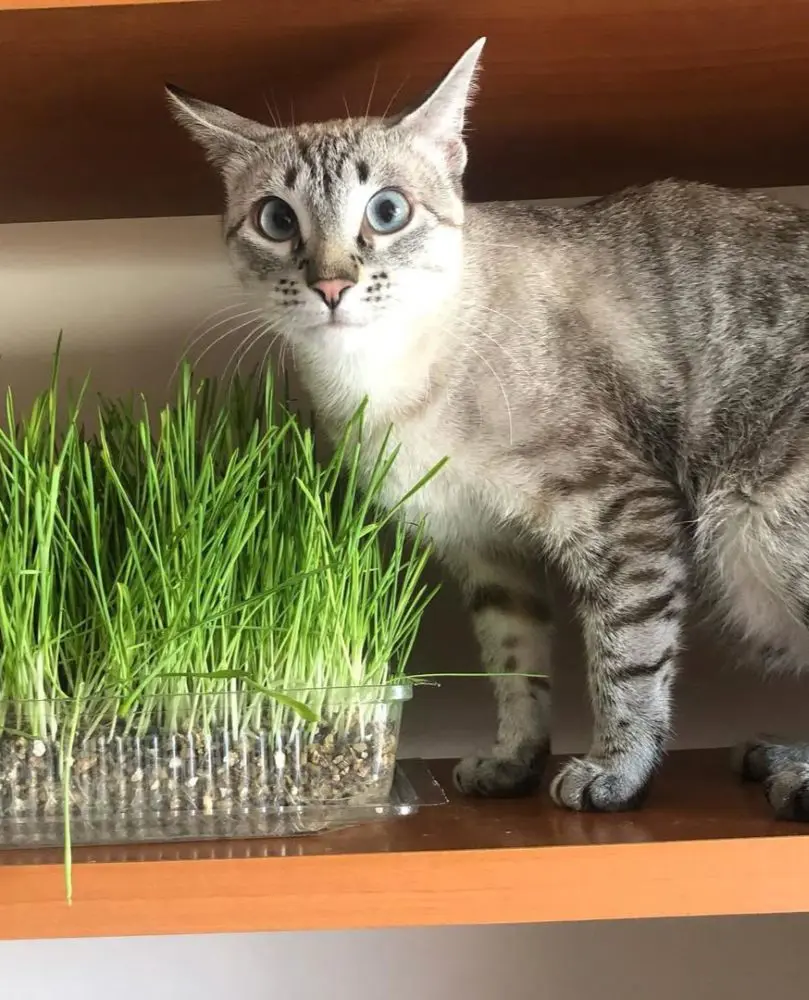
Although indigestible to cats, the barley grass is not particularly harmful if eaten in small quantities. This plant will most likely be passed through the cat's intestine without getting absorbed by its system.
Barley is also occasionally used as an ingredient in cat food. However, it is only added after the plant is thoroughly processed, meaning the barley used in cat food is vastly different from raw barley.
Due to its mildly sweet flavor, cats are naturally drawn to the barley grass. The natural sweetness comes from its chlorophyll content, which also contributes to its fresh aroma. While not all cats love the taste, many enjoy it. But, don't let your cat excessively as it can trigger digestive issues.
3. Oat Grass
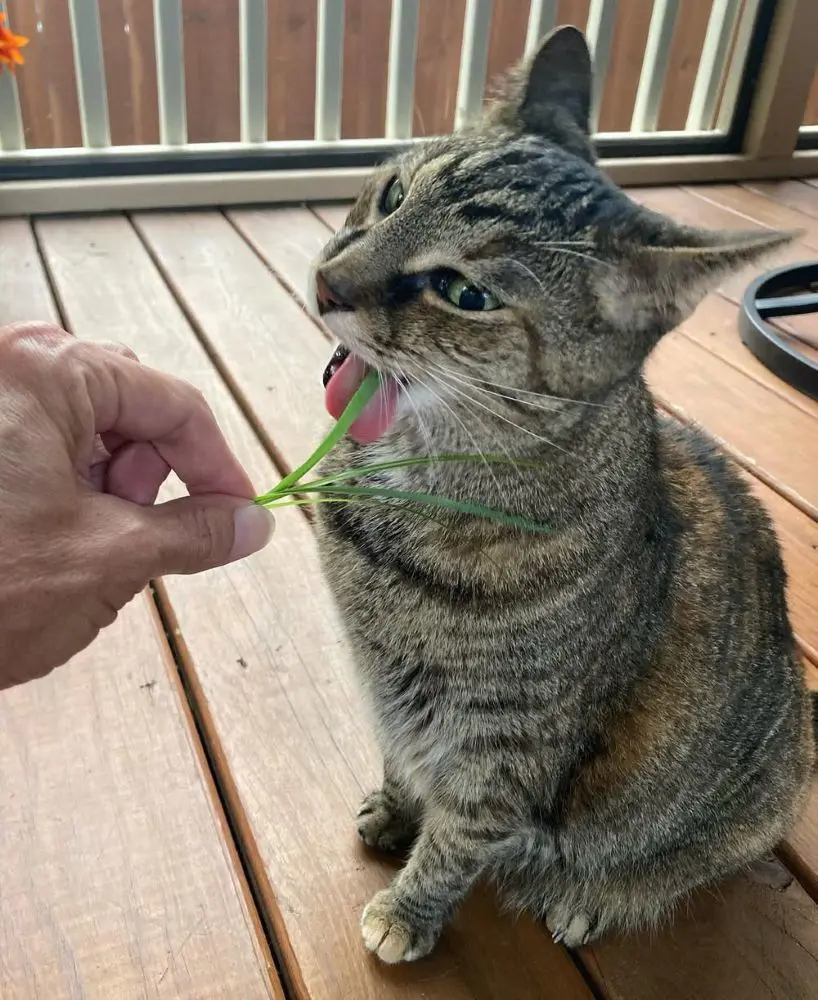
Also referred to as button grass, the oat grass grows significantly faster than other cat grass varieties, growing to a height of almost six feet. However, you don't need to wait for the plant to grow to its full size before feeding it to your cat. The desired height is typically achieved in 7-10 days, more if you want the grass to reach its maximum size.
The primary ingredient of oats, this grass appeals to cats with its sweet taste and mild flavor. Feeding oat grass occasionally helps provide nutrients that cats don't usually get from their meat-based and fulfills their fiber requirement.
4. Ryegrass
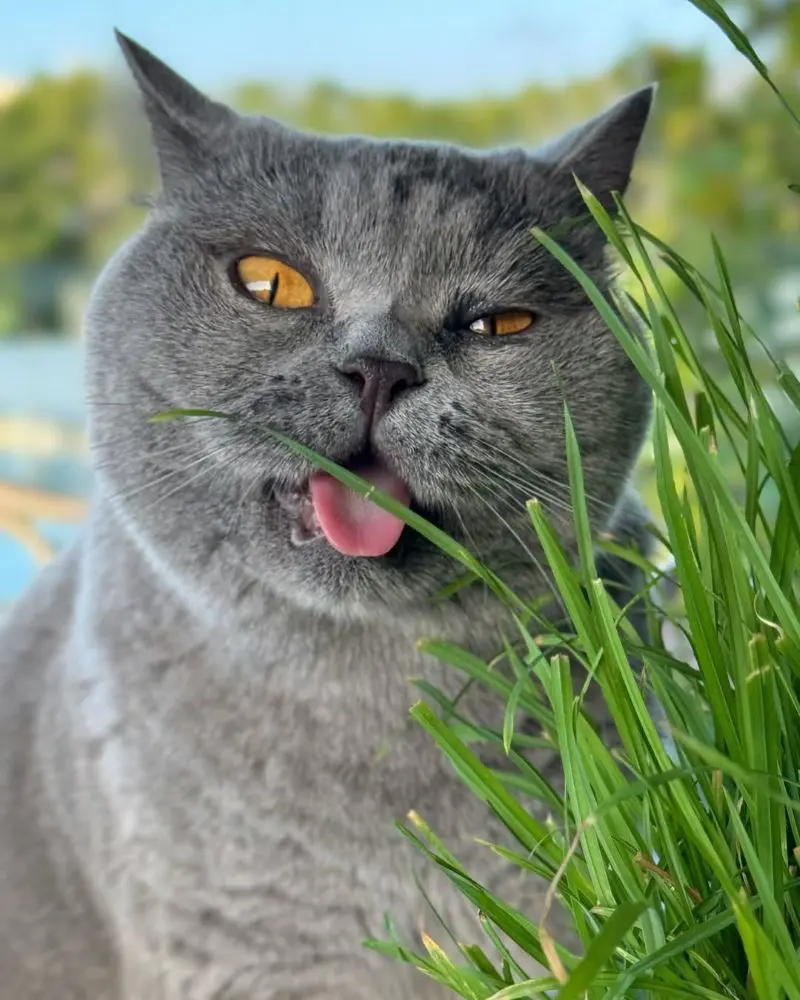
Considered non-toxic to cats, the ryegrass is safe for a pet to munch on; however, the plant should be free from pesticides and other chemicals that are normally used in plants.
Cats often ingest ryegrass when they are going through stomach upsets. This grass can induce vomit in these felines, helping them remove any undigested food that is causing discomfort.
At the same time, the ryegrass is also a resilient plant that doesn't get easily uprooted and can withstand mishandling to a degree. If your cats like to play it rough, the ryegrass is the perfect choice.
5. Kentucky Bluegrass
Often used as a lawngrass, the Kentucky Bluegrass is not normally considered to be a cat grass. When nibbled in moderation, the grass is non-toxic and can also provide a source of fiber.
While its soft texture and mild flavor are appealing to cats, the Kentucky bluegrass is less commonly grown as cat grass, compared to options like wheatgrass or oat grass.
Like most cat grass, giving this grass 1-2 times a week should be enough to fulfill their craving. If your cat shows excessive interest in this plant, the pet could be suffering from dietary deficiencies.
6. Orchard Grass
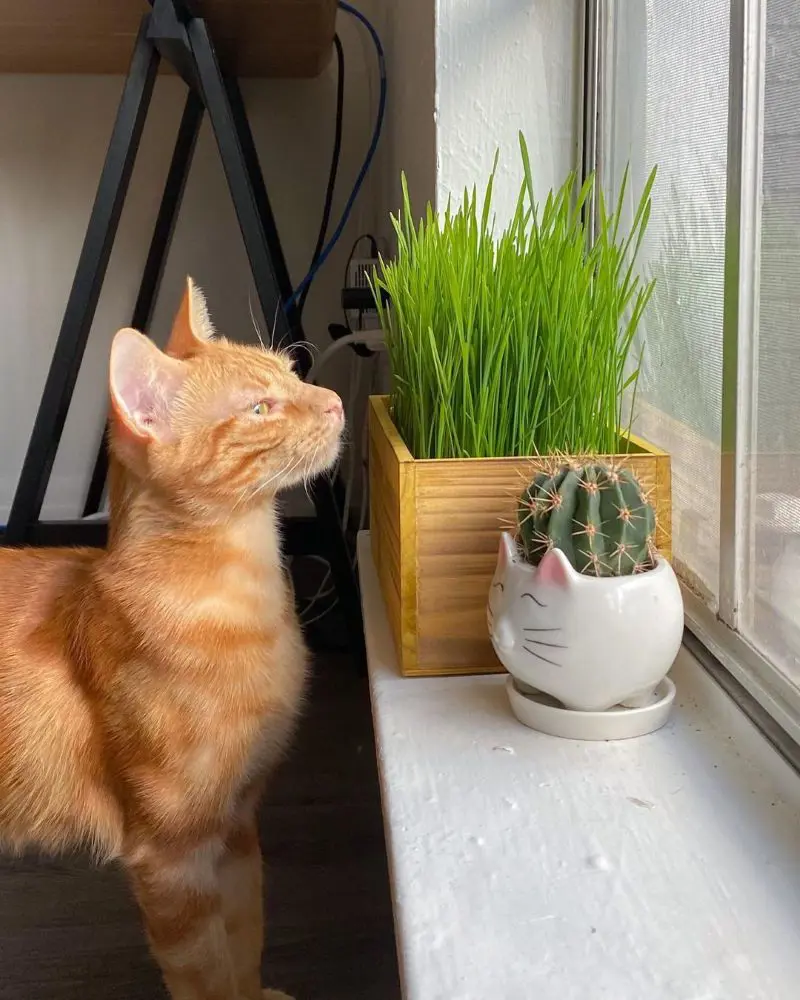
Primarily used in hay for livestock, the orchard grass is also safe for cats to nibble on. Besides its culinary use for cats, the grass can also be grown indoors, despite being more commonly cultivated outdoors.
Orchard grass germinates in about 7–10 days and can take around 3–4 weeks to reach a height suitable for cats to graze on. Meanwhile, target to keep the soil moist but not waterlogged.
While orchard grass is non-toxic to cats, the grass blades can sometimes be too coarse or sharp, irritating a cat's throat or mouth. Always trim the grass when it gets too long and also constantly monitor your cat's intake.
7. Fescue Grass
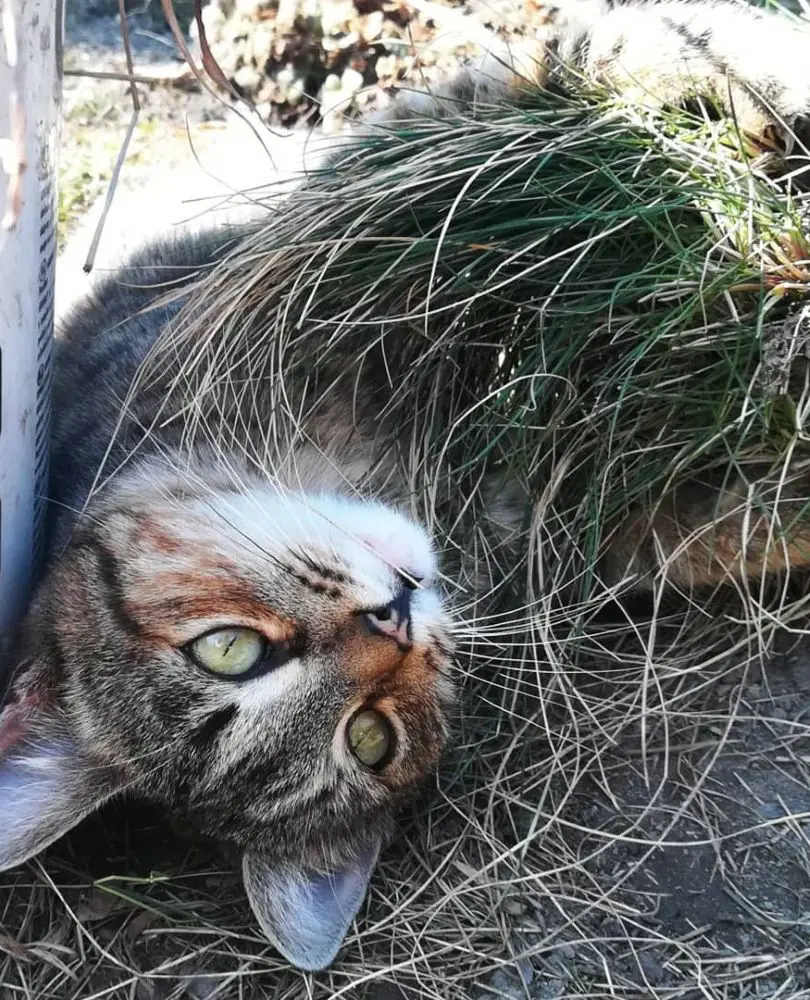
This dense grass is often found in lawns and gardens, but it’s not as soft or palatable as cat-specific grasses like wheatgrass or oat grass. While it’s safe, uncontrolled eating can cause vomiting or diarrhea, as cats' systems aren’t designed to process large amounts of plant material.
To discourage your cat from overeating fescue grass, allow access to other safe cat grasses they might prefer. These are softer and more appealing, and can lessen their interest in fescue.
Moreover, a balanced diet with sufficient fiber and hydration also helps reduce their need to chew on grass excessively. If your cat persists in eating large amounts of grass, consider consulting a veterinarian to rule out underlying dietary or behavioral issues.
8. Bermuda Grass
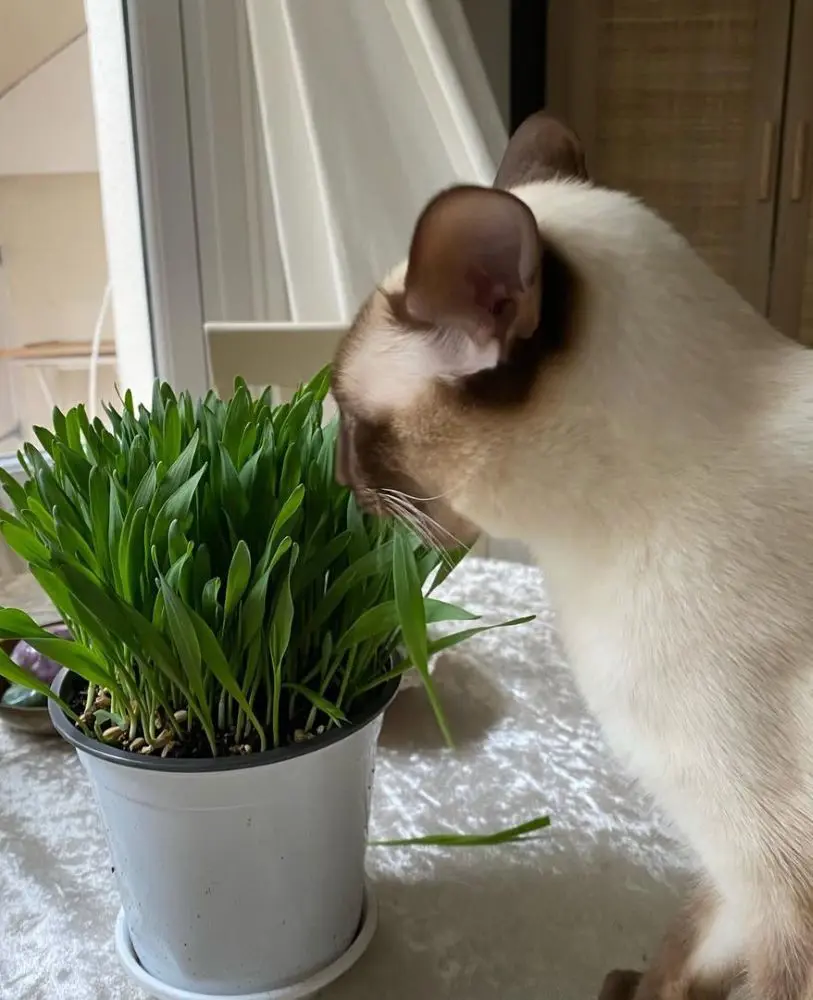
Bermuda grass mostly grows in warm climates, in sandy or clay soils with plenty of sunlight. As a popular grass in tropical and subtropical regions, this plant rapidly through rhizomes and stolons that create a carpet-like surface.
Thanks to its rapid growth and durability, the Bermuda grass is primarily used for lawns, sports fields, golf courses, and pastures. As a cat grass, the plant attracts felines with its grassy taste and fibrous texture.
9. Timothy Grass
Also known as the common cat's tail, this grass is primarily used in cattle fodder. The plant, native to Europe, was initially grown in gardens where it attracts different pollinators and wildlife.
If your cat is prone to hay fever, Timothy grass might not be a suitable option to grow indoors. Meanwhile, it can also grow rapidly and quickly become an invasive species.
Allow your cat to snack on it occasionally, such as 1–2 times per week, depending on their interest and digestive health. Eating grass too often can lead to diarrhea and other digestive issues.
How To Grow Cat Grass?

Growing a cat grass variety isn't much different from growing a normal grass. With a little preparation and by following some simple steps, you can readily grow these plants at home for your cats to snack.
i. Sow the Seeds
The first step is to sow the grass seeds into the soil. While some recommend soaking the seeds in water for a few days, you can skip the soaking and plant the seeds directly.
Unlike outdoor growing which makes the grass vulnerable to cold temperatures, indoor planting can be done throughout the year. Just make sure that the grass seeds are planted at least a half-inch deep and an inch apart from one another.
ii. Germinate
For healthy growth, successful germination is vital. Cat grass seeds, like any other plants, germinate when the seed grows visible structures, hinting towards the plant's growth.
Similarly, to achieve successful germination, the soil needs to be watered properly, with around a half cup of water. When the seed absorbs the water and other nutrients from the soil, its embryo begins to grow outwards, showing sprouts that will eventually form to full-sized plants.
iii. Provide Adequate Sunlight
During its initial growth stage, the plant will need plenty of direct sunlight. Place the pot near a south-facing window to gain maximum sunlight.
On the other hand, keep the plant away from direct sunlight during afternoons or when the sun is hottest. If the tips are becoming brownish, the plant is getting too much direct sunlight and should be immediately transported to a spot where it will receive relatively less sunlight.
iv. Compact the Soil
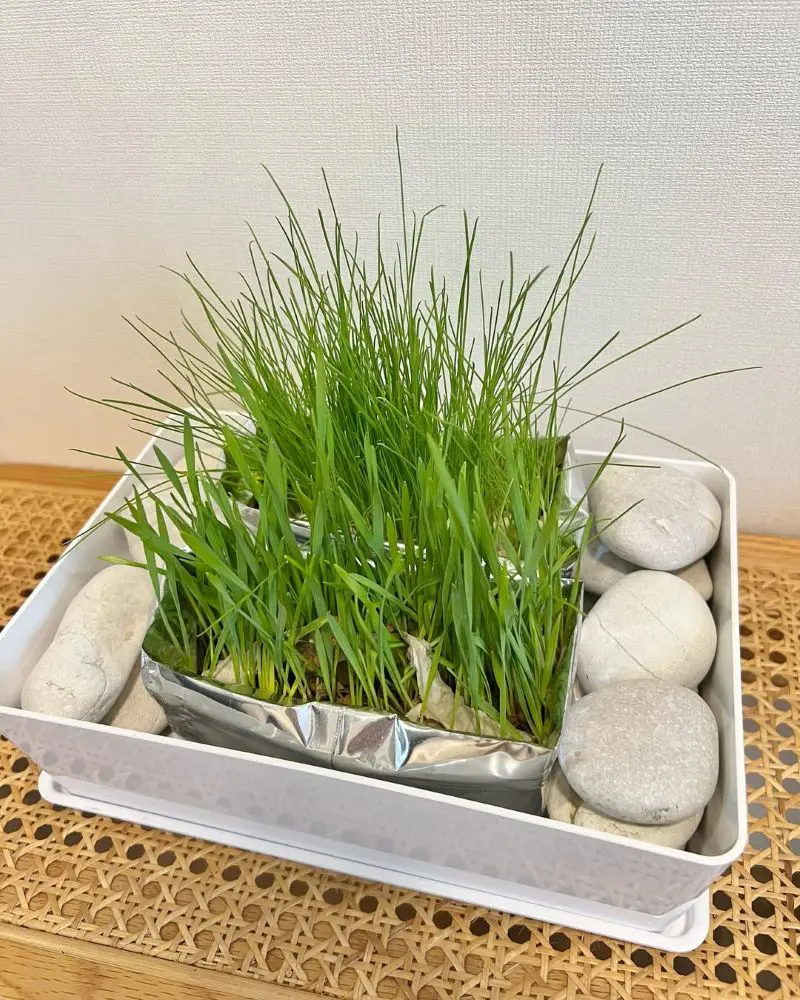
This step involves pressing down the soil to make it denser. Normally, this is done to make the soil denser with the plant's growth, as loose soil may not hold the weight of the grass or cause poor development.
Meanwhile, the soil should not be dry as it can cause the plant to die prematurely. However, overwatering is also not recommended; use the right amount of water that aids in healthy grass growth without loosening up the soil.
v. Harvest
When the grass reaches a height of around three inches, the plant is ready to be consumed by your pet companion. By this time, the soil should be firm enough that the grass doesn't get uprooted.
The waiting period is crucial as, if you allow your cats to eat the grass when it's still tiny, there's a higher possibility of the plant getting destroyed by your pet.
vi. Grow Multiple Plants At Once
As these plants might take weeks to grow, it's important to keep the supply steady. Cats are known to only munch on the tip of the grass, so even with restricted consumption, it won't take a lot of time for the grass to run out.
To prevent this situation, you can try growing cat grasses in multiple pots. This will not only provide an adequate supply of grass to your cat, but it will also allow the feline to enjoy multiple flavors and varieties at the same time.
Where To Grow Cat Grass?
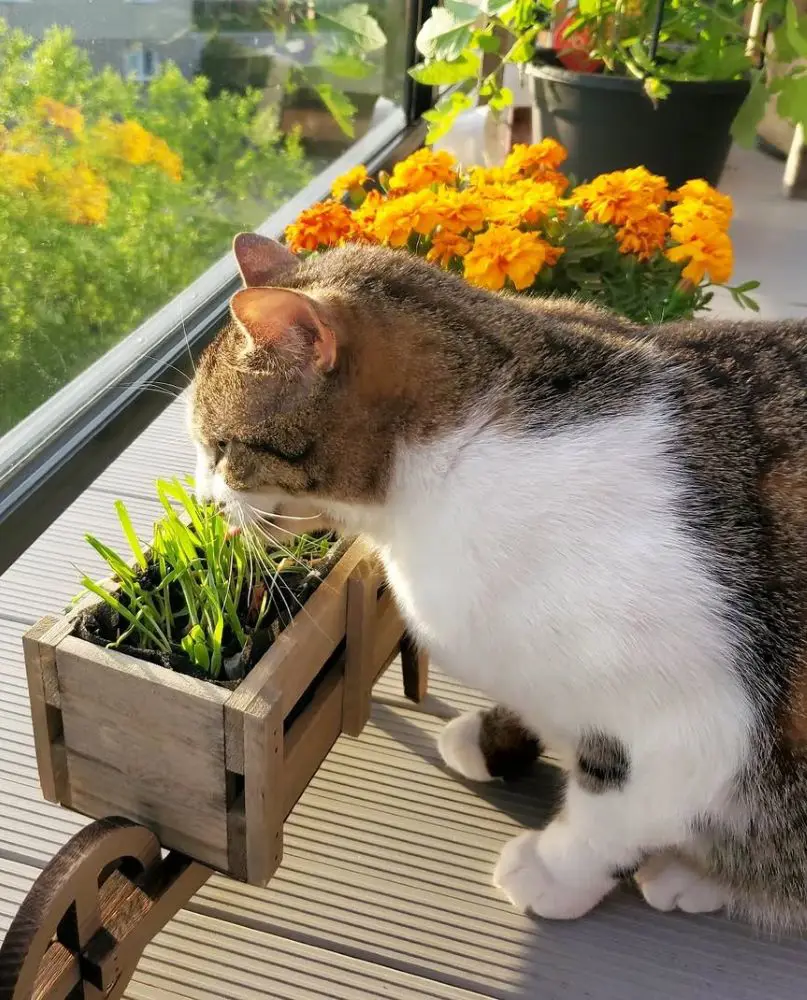
While growing cat grass indoors, you can place the pot in a variety of spots that meet the ideal conditions for the grass's survival and growth. At the same time, these spots should also be away from your cat's reach until it's ready for consumption. A sunny windowsill is often the perfect location, as it allows the grass to receive 6–8 hours of indirect sunlight daily.
If direct sunlight is unavoidable, use sheer curtains to filter the light and prevent the soil from drying out too quickly. Alternatively, place the pots on high shelves or atop cabinets near windows, where they are safe from curious paws.
In conditions where natural sunlight is limited, grow lights can be used to mimic the necessary light conditions. A kitchen countertop or utility room with controlled light exposure can also work, provided it’s not in an area exposed to drafts or temperature fluctuations.
Use shallow pots with a depth of 2–4 inches and drainage holes to prevent waterlogging. If you are unable to water the pot regularly, a self-watering planter can come in extremely handy. For healthy growth, use organic, pesticide-free potting soil with good drainage.
Can You Feed Cat Grass Daily?
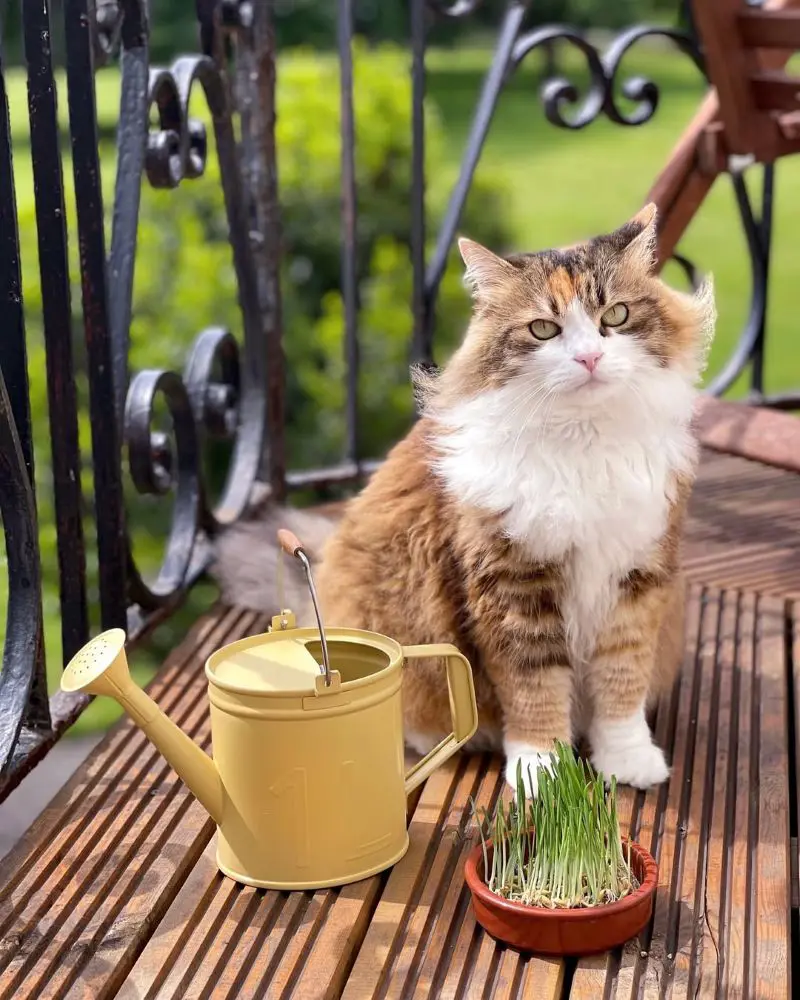
Giving cat grass daily in limited quantities to your cat is generally safe, as it is non-toxic and helps with hairball management. Cat grass, such as wheatgrass, oat grass, or barley grass, provides fiber, chlorophyll, and mild nutrients. However, portion control is vital to prevent potential issues like stomach irritation or vomiting, which can occur if your cat consumes too much grass.
Cats don’t need cat grass as a daily dietary staple; offering it 2–3 times a week is sufficient for most cats. Daily access might encourage overconsumption, especially in cats with a strong grazing instinct. This could disrupt their digestion or lead to dependency on grass for fiber, instead of relying on meat.
If you choose to provide cat grass daily, limit the portion by offering only a small patch or a few blades to chew. Make sure that grass doesn't exceed over 10% of the cat's daily intake.
Where To Purchase Cat Grass?
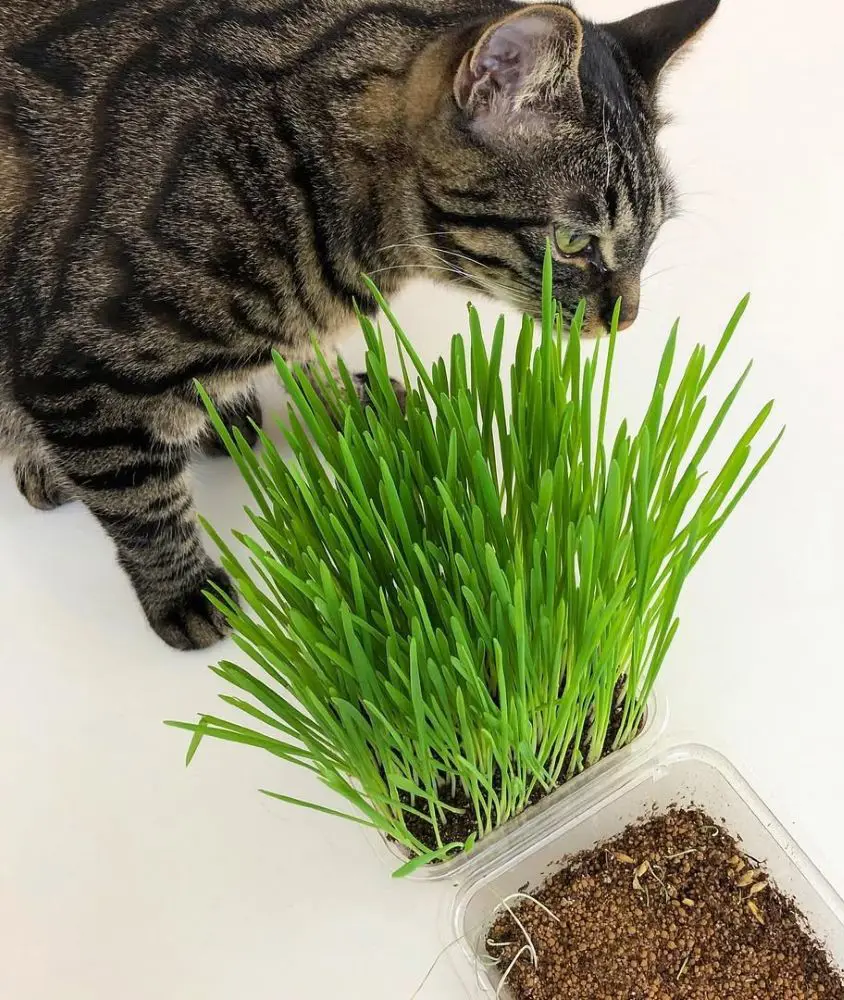
If you're not up to the task of growing cat grass, you can purchase a pot from an online retailer, pet supply store, or even at your local farmer's market. Many vendors who sell potted herbs and plants also carry potted cat grass in their supply. You can buy one for about $10 to $15, but organic or specialty varieties might cost a little more.
When choosing cat grass, look for plants that are grown pesticide-free and are safe for your cat. Check for freshness; make sure there are no signs of yellowing or mold. Alternatively, you can also purchase a cat grass starter kit from an online seller or pet store. These products come will all the supplies necessary for you to grow cat grass along with necessary instructions, making it a layman's job.
Commercial Cat Grass Seeds
Purchase your cat grass seeds from Amazon or your nearest pet supply stores. If you plan to grow cat grass regularly, garden centers and online platforms offer larger quantities with a huge discount. The most popular seeds for cat grass include wheatgrass, oat grass, barley grass, and rye grass; a packet of seeds usually costs between $3 and $8, depending on the brand and quantity.
Cat grass seeds germinate quickly, usually within 3 to 5 days. After sprouting, they grow to a suitable size for cats to enjoy in 7 to 10 days.
Top Lists

